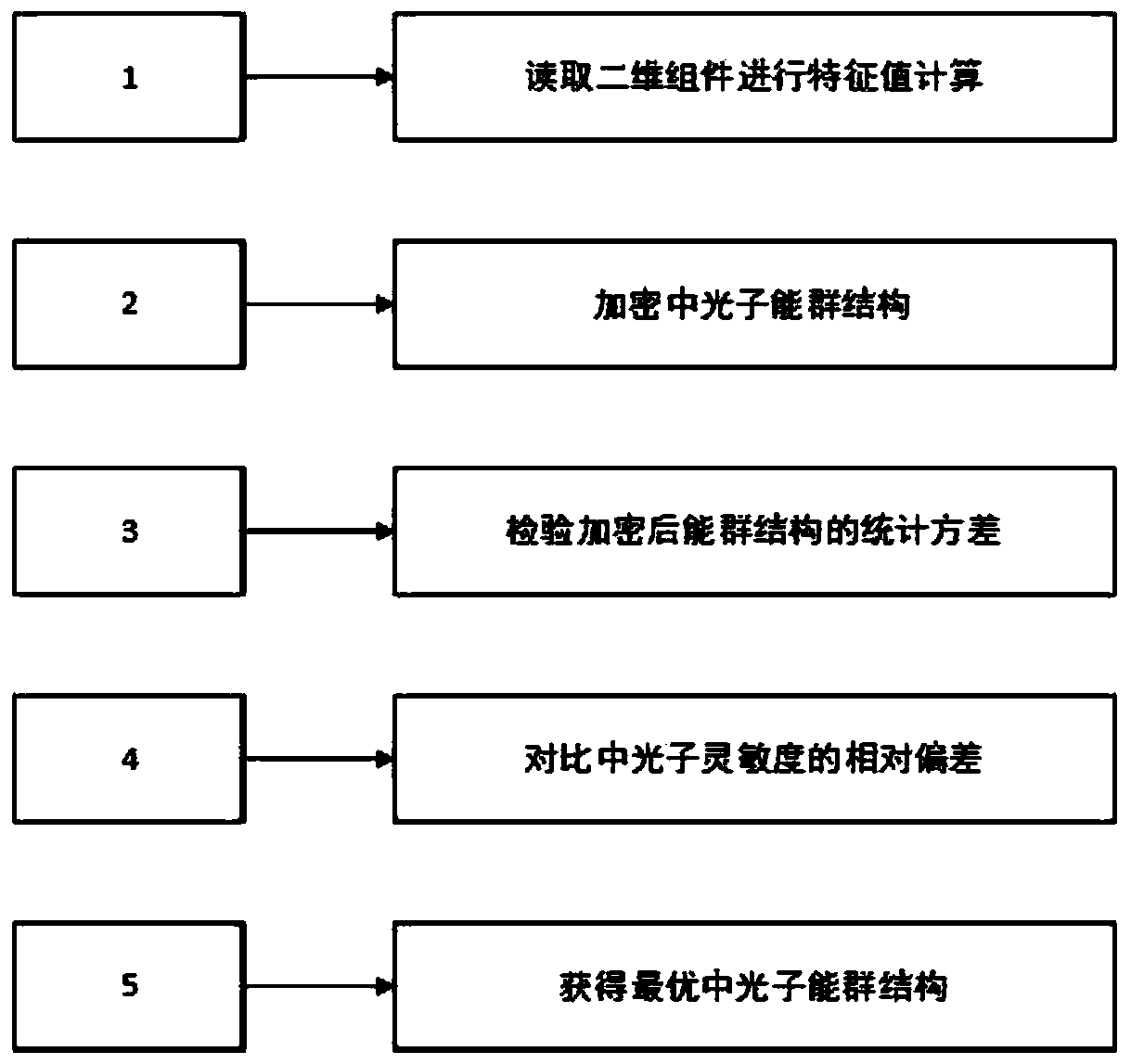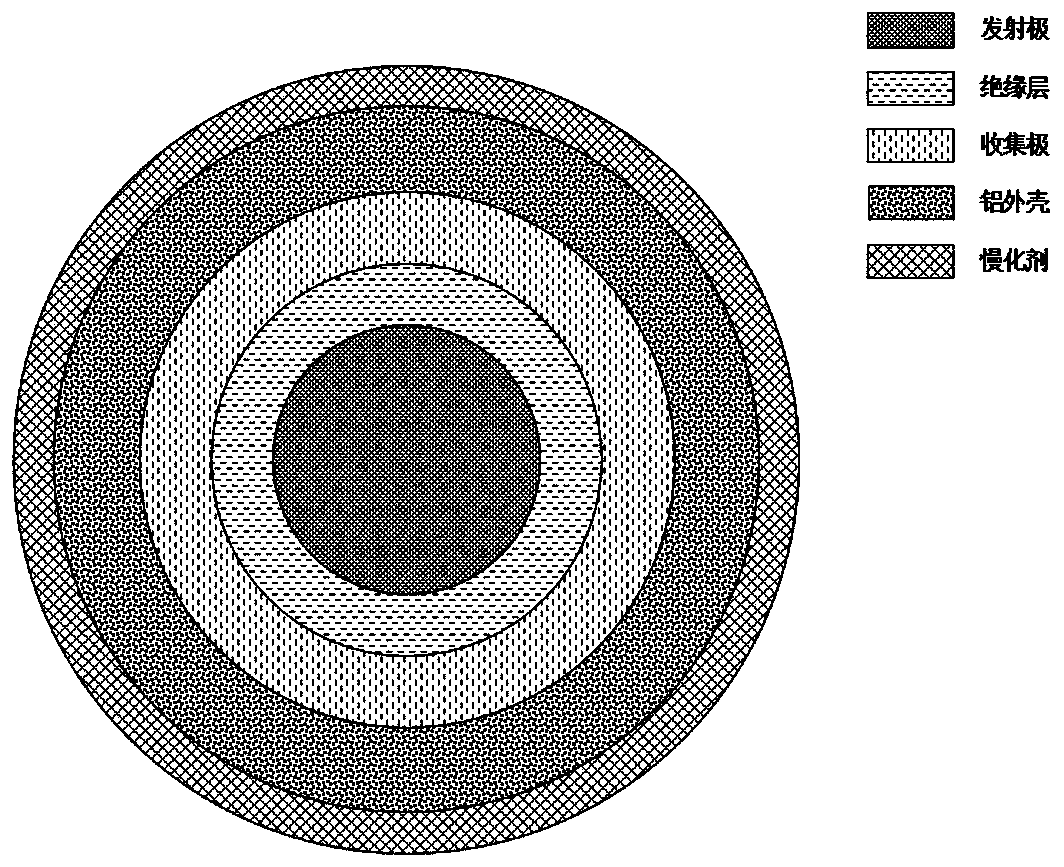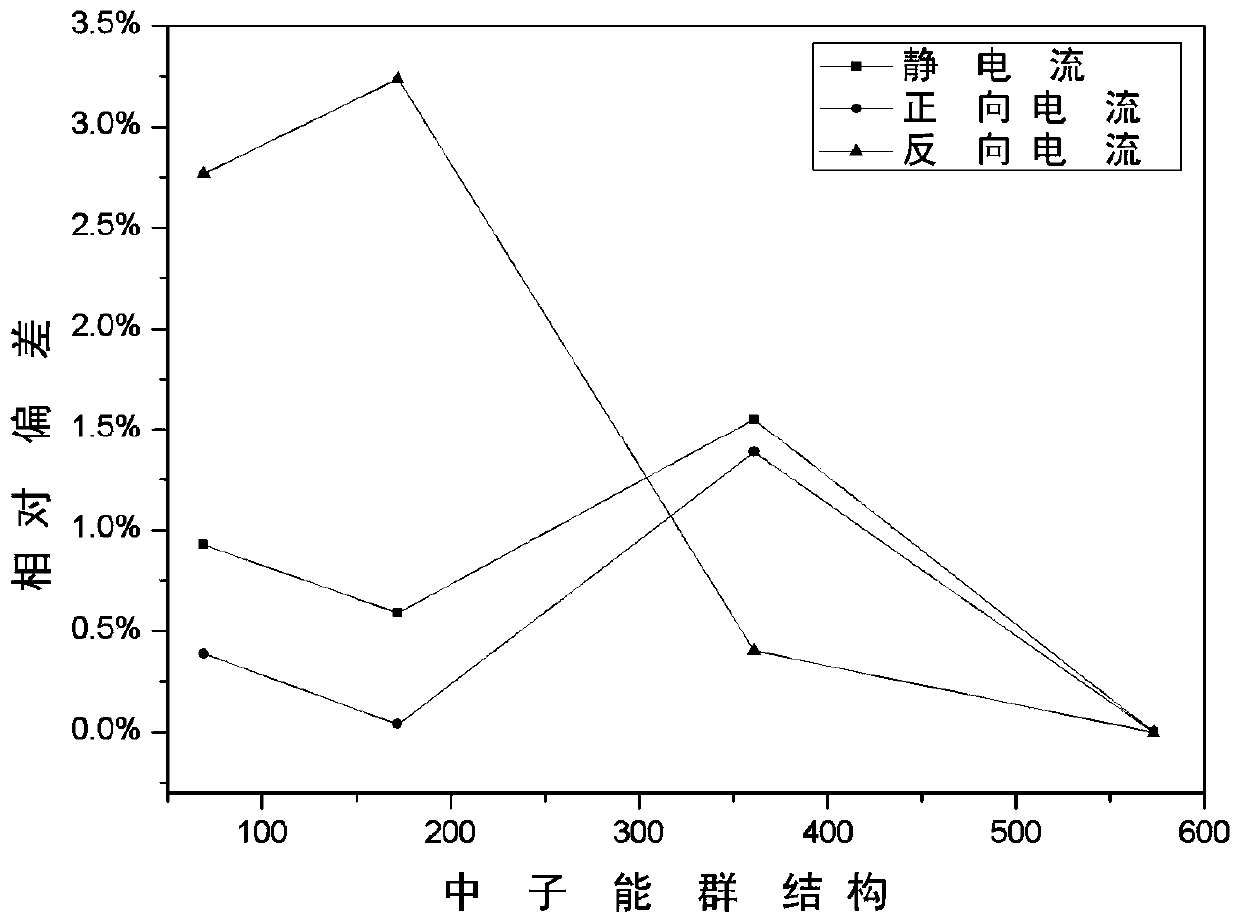Characterization method of neutron-photon energy spectrum in self-powered neutron detector
A neutron detector and self-sufficient energy technology, which is applied in the field of theoretical simulation of the detection system in nuclear reactors, can solve the problems of inability to obtain continuous spectrum and continuous energy spectrum, etc.
- Summary
- Abstract
- Description
- Claims
- Application Information
AI Technical Summary
Benefits of technology
Problems solved by technology
Method used
Image
Examples
Embodiment Construction
[0022] The present invention will be further described in detail below in conjunction with the accompanying drawings and specific embodiments.
[0023] Specific steps such as figure 1 shown. The neutron-photon energy spectrum characterization method in the self-sufficient neutron detector of the present invention mainly includes neutron-photon energy spectrum calculation of different energy group structures, neutron energy spectrum calculation within the range of statistical variance of neutron-photon energy spectrum The group-photon energy group encrypts and calculates the sensitivity of self-sufficient energy detectors under different neutron-photon energy spectra. The specific steps are as follows:
[0024] Step 1: Read the geometric dimensions, material arrangement, structure and materials of the self-powered neutron detectors in the PWR to obtain the sensitivity calculation model of the self-powered neutron detectors, where the self-powered neutron detectors The ratio o...
PUM
 Login to View More
Login to View More Abstract
Description
Claims
Application Information
 Login to View More
Login to View More - R&D
- Intellectual Property
- Life Sciences
- Materials
- Tech Scout
- Unparalleled Data Quality
- Higher Quality Content
- 60% Fewer Hallucinations
Browse by: Latest US Patents, China's latest patents, Technical Efficacy Thesaurus, Application Domain, Technology Topic, Popular Technical Reports.
© 2025 PatSnap. All rights reserved.Legal|Privacy policy|Modern Slavery Act Transparency Statement|Sitemap|About US| Contact US: help@patsnap.com



